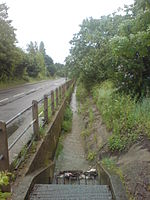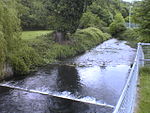Bayford railway station
1924 establishments in EnglandDfT Category F2 stationsFormer London and North Eastern Railway stationsLondon stations without latest usage statistics 1415London stations without latest usage statistics 1516 ... and 9 more
London stations without latest usage statistics 1617London stations without latest usage statistics 1718Rail transport stations in London fare zone BRailway stations in Great Britain closed in 1973Railway stations in Great Britain opened in 1924Railway stations in Great Britain opened in 1973Railway stations in HertfordshireRailway stations served by Govia Thameslink RailwayUse British English from March 2017

Bayford railway station serves the villages of Bayford and Brickendon in Hertfordshire, England. The station is on the Hertford Loop Line, 16 miles 56 chains (16.70 miles, 26.88 km) down the line from London King's Cross.
Excerpt from the Wikipedia article Bayford railway station (License: CC BY-SA 3.0, Authors, Images).Bayford railway station
Bayford Green, East Hertfordshire Bayford
Geographical coordinates (GPS) Address External links Nearby Places Show on map
Geographical coordinates (GPS)
| Latitude | Longitude |
|---|---|
| N 51.758 ° | E -0.096 ° |
Address
Bayford
Bayford Green
SG13 8PL East Hertfordshire, Bayford
England, United Kingdom
Open on Google Maps









